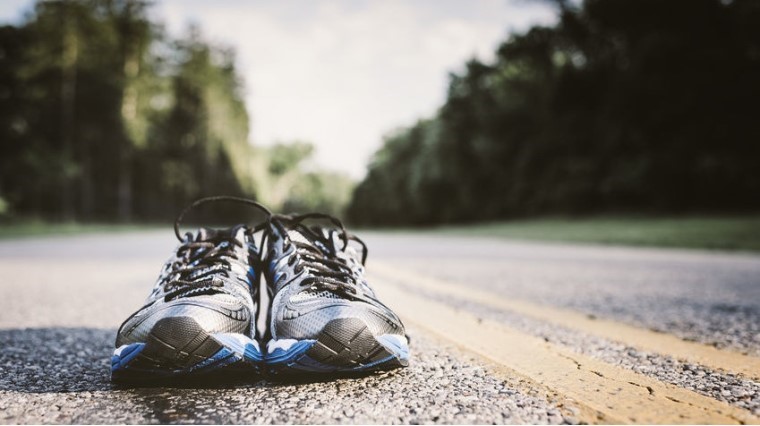What You Need To Know About Shoe Longevity

We all like to hold on to our runners for as long as we can, but the desire to save dollars may be causing more harm than good. While a hole in the sole is a sure sign it’s time for new kicks, there are other signs you could be ignoring.
The tread is gone: The key function of a shoe is to provide traction when you run, however over time the rubber on the bottom outsole can wear. Think of it as the bold spots on a car tire. If left too long, this may alter a runner’s gait and increase the risk of injury.
Loss of shock absorption: The midsole foam is the part of the shoes that gives you that springy feeling. Think of the feeling you have with brand new kicks that make you feel you could run a mile with a spring in each step. While not visible to the naked eye, runners can check their midsoles by placing their shoes on a flat surface. If the shoes don’t sit straight and evenly, it’s time for them to go. If you can also fold your shoe in half easily, the midsole has had its day.
A worn out midsole means your knees and hips will take the brunt of the impact leading to long-term damage. Furthermore, a lack of shock absorption increases the risk of injury caused by instability.
Numbers: Shoes, much like a car’s tyres, have their use by date and sometimes no matter how well looked after the exterior looks, they have run their mileage. While it differs depending on a person’s weight, running style and the manufacturer's purpose and quality of the shoes (eg. distance shoes vs race shoes vs entry-level joggers), a general rule of thumb is 400 – 500 kilometres before it’s time to start looking for a new pair.
Invest for a return: While many runners rely on one pair of shoes to get them through, investing in a second pair would ensure both your shoes last the distance and are in usable condition longer. Like runners, the middle sole of a shoe needs days off too! Swapping your shoes around means the inner sole has time to bounce back after use.
